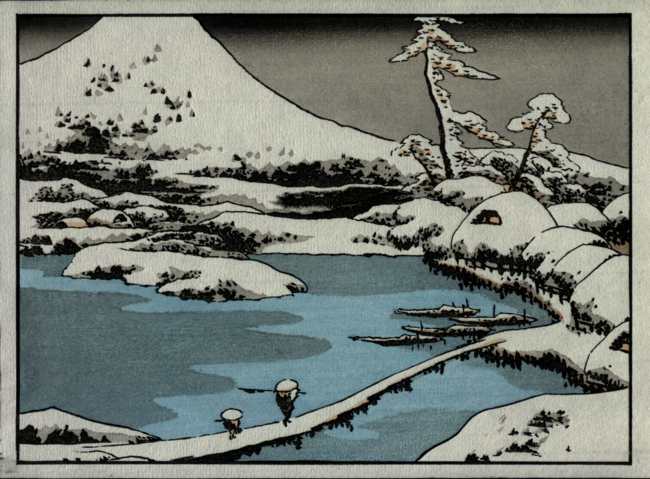Guess Who!
We had another visit from a TV crew at the shop today, but - unlike the people who visit to shoot a report on our print-making activities - today's visitors weren't interested in the prints.
They had called yesterday asking for permission to come, and although they had been a bit vague about what kind of program they were working for, I had acquiesced to their request, and in due course, they arrived this afternoon. It was a very small crew, just a young man with a camera and a mic, and his director, the man who did all the talking.
It turned out that they were responsible for the production of a small corner that appears once a week as part of a very famous variety program. Their mission is to find somebody who will pose a quiz question, which will be presented (on videotape) to the panel of celebrities in the studio, to see how many of them can answer it.
He knew nothing about printmaking of course, so it was up to me to come up with an interesting question. Now as it happens, I have done this before; around twenty years ago I worked with a TV crew and created an extended quiz for one of these variety programs. We posed such questions as "What material do we use to soften the hair on our printing brushes?", "For what purpose to we use nail polish?", or "Some of our pigments do not dissolve in water; what do we use in this case?" [Answers below!]
As that program had been a very long time ago, I suggested to this director that perhaps one of those might be suitable, but he didn't agree. "A bit too esoteric; we need something more understandable to a general audience."
We batted around a few more ideas, but everything that I thought was interesting, he brushed aside. At one point, he suggested that I hold up one of our printing pads - a baren - and pose the question, "What do we call this?"
I thought this was ridiculous, and told him so, "If they know it, they know it; if they don't, no amount of 'thinking' will give them the answer. It's pointless!"
We came to a bit of an impasse, so gave that part a break, and went into the shop area to film the part of the program that would give the viewers a general background - Dave working at his bench, Dave showing a customer some prints, etc. etc.
At one point - so that people would get an impression of what our shop was like - I pulled a print at random from the racks and turning to the camera, spoke a little bit about it, "This is one of the reproductions I carved some years back. I was attracted to it by the way that the designer decided to take nature into his own hands. Look - he has sliced off the top of Mt. Fuji. There's only one ukiyo-e designer who would have ever considered doing such a thing ..."

And even as I spoke those words, both the director and I realized that we had found our quiz question. We made eye contact over the camera, he nodded, and I poured it on ...
"Typical designers back in those days simply worked within the boundaries decided by their 'style' or 'school'. They would draw - for example - the folds of a kimono in the standard way that they had been trained to do as apprentices. It was the same with everything that they drew - be it a leaf, or a bird or ... a mountain. They followed the way that their studio master had defined for them.
"But one man was different. Blazing his own trail through the world of ukiyo-e design, beholden to no studio tradition, only one man was bigger even than Mt. Fuji ..."
I only needed one take. We wrapped it up easily after that, and a few minutes later they were gone.
But it's really too simple a question, isn't it!
Story #474, January 25, 2015
Comments on this story ...



Posted by: Dave
The three answers:
1) our brushes are softened by rubbing them over a piece of sharkskin. It has strong 'teeth' that frazzle the ends of the hairs, leaving them stiff enough to spread pigment, but with tips soft enough not to leave streaks.
2) we paint it onto the corner of the printing paper - the corner that will fit into the registration marks. When making a print with multiple impressions, the corner is easily damaged, and the nail polish helps preserve it, giving us perfect registration right to the end.
3) pigments that do not readily dissolve in water are softened first with a splash of alcohol. The old guys used to use o-sake; we use pure alcohol from the pharmacy.
As for the answer to the main quiz … no way; you're on your own!